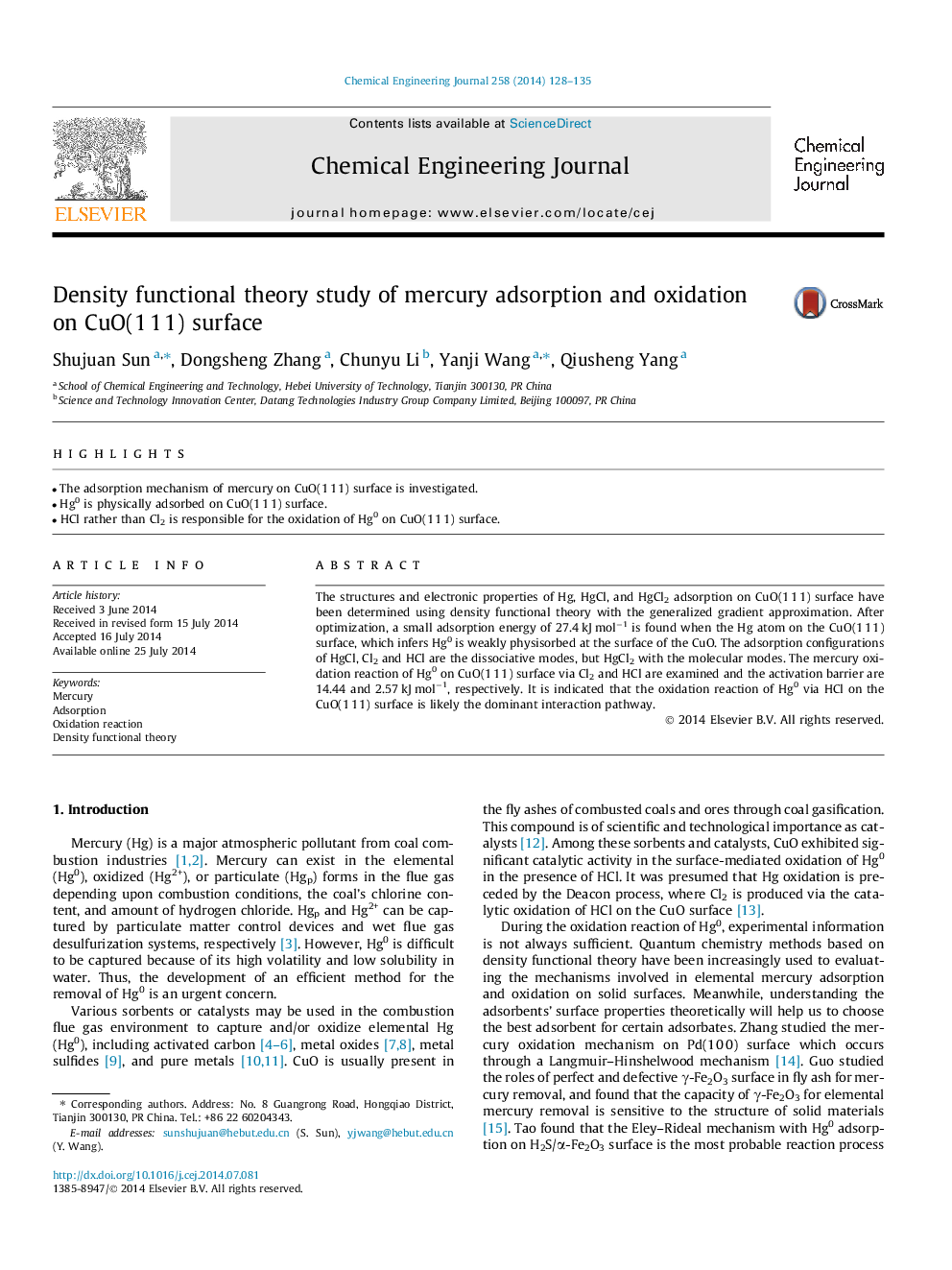| کد مقاله | کد نشریه | سال انتشار | مقاله انگلیسی | نسخه تمام متن |
|---|---|---|---|---|
| 146942 | 456383 | 2014 | 8 صفحه PDF | دانلود رایگان |

• The adsorption mechanism of mercury on CuO(1 1 1) surface is investigated.
• Hg0 is physically adsorbed on CuO(1 1 1) surface.
• HCl rather than Cl2 is responsible for the oxidation of Hg0 on CuO(1 1 1) surface.
The structures and electronic properties of Hg, HgCl, and HgCl2 adsorption on CuO(1 1 1) surface have been determined using density functional theory with the generalized gradient approximation. After optimization, a small adsorption energy of 27.4 kJ mol−1 is found when the Hg atom on the CuO(1 1 1) surface, which infers Hg0 is weakly physisorbed at the surface of the CuO. The adsorption configurations of HgCl, Cl2 and HCl are the dissociative modes, but HgCl2 with the molecular modes. The mercury oxidation reaction of Hg0 on CuO(1 1 1) surface via Cl2 and HCl are examined and the activation barrier are 14.44 and 2.57 kJ mol−1, respectively. It is indicated that the oxidation reaction of Hg0 via HCl on the CuO(1 1 1) surface is likely the dominant interaction pathway.
Journal: Chemical Engineering Journal - Volume 258, 15 December 2014, Pages 128–135